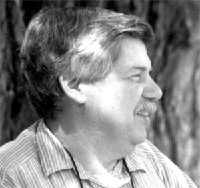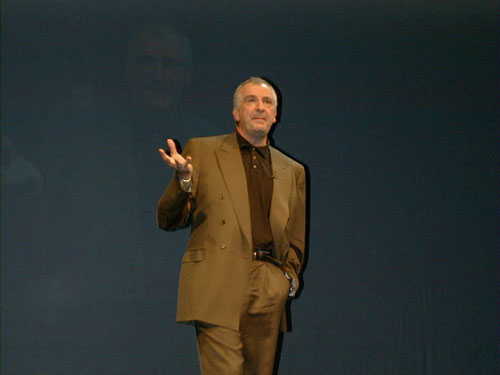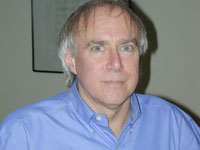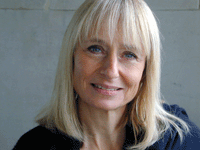W D Hamilton is a good candidate for the title of most distinguished Darwinian since Darwin. Other candidates would have to include R A Fisher, whom Hamilton revered as a young student at Cambridge. Hamilton resembled Fisher in his penetrating biological intuition and his ability to render it in mathematics. But, like Darwin and unlike Fisher, he was also a superb field naturalist and explorer. I suspect that, of all his twentieth century successors, Darwin would most have enjoyed talking to Hamilton. Partly because they could have swapped jungle tales and beetle lore, partly because both were gentle and deep, but mostly because Hamilton the theorist was responsible for clearing up so many of the very problems that had intrigued and tantalised Darwin.
William Donald Hamilton FRS was Royal Society Research Professor in the Department of Zoology at Oxford, and a Professorial Fellow of New College. He was born in 1936, spent a happy childhood botanising and collecting butterflies in Kent, was educated at Tonbridge, then Cambridge where he read Genetics. For his Ph.D. he moved to London where he was jointly enrolled at University College and LSE. He became a Lecturer at Imperial College in 1964, where his teaching skills were not highly rated. After a brief Visiting Professorship at Harvard, he accepted a Museum Professorship at the University of Michigan in 1977. Finally, in 1984 he moved to Oxford at the invitation of Richard Southwood, who had been his Professor at Imperial.
Hamilton was showered with medals and honours by the academies and learned societies of the world. He won the Kyoto Prize, the Fyssen Prize, the Wander Prize, and the Crafoord Prize - instituted by the Swedish Academy because Alfred Nobel unaccountably failed to include non-medical Biology in his list of eligible subjects. But honours and recognition did not come early. The autobiographical chapters of Hamilton's collection of papers, Narrow Roads of Gene Land, reveal a lonely young man driven to self-doubt by lack of comprehension among his peers and superiors. To epitomise the Cambridge of his undergraduate days, where "many biologists hardly seemed to believe in evolution" he quotes one senior professor: "Insects do not live for themselves alone. Their lives are devoted to the survival of the species . . ." This is "Group Selection", a solecism which would cause today's biology undergraduates to wince, but they have the advantage of a post-Hamilton education. The young Hamilton felt that in Cambridge he was wincing alone. Only the cantankerous Fisher made sense to him, and he had been advised that Fisher "was good with statistics but knew nothing about biology."
For his doctoral work he proposed a difficult mathematical model with a simple conclusion now known as "Hamilton's Rule." It states that a gene for altruistic self sacrifice will spread through a population if the cost to the altruist is outweighed by the benefit to the recipient devalued by a fraction representing the genetic relatedness between the two. Hamilton's original paper was so difficult and innovative that it almost failed to be published, and was largely ignored for a decade. When finally noticed, its influence spread exponentially until it became one of the most cited papers in all of biology. It is the key to understanding half the altruistic cooperation in nature. The key to the other half - reciprocation among unrelated individuals - is a theory to which Hamilton was later to make a major contribution, in collaboration with the social scientist Robert Axelrod.
The great obsession of his later career was parasites - their evolutionary rather than their medical impact. Over twenty years, Hamilton convinced more and more biologists that parasites are the key to many outstanding problems left by Darwin, including the baffling riddle of the evolution of sex. The sexual shuffling of the genetic pack is an elaborate trick for outrunning parasites in the endless race through evolutionary time. This work led Hamilton into the arcane world of computer simulation, where his models were as richly textured, in their way, as his beloved Brazilian jungle. His spin off theory of sexual selection (how Darwin would have relished it!) was that bird of paradise tails and similar male extravaganzas are driven by the evolution of female diagnostic skills: females are like sceptical doctors, actively seeking parasite-free males to supply genes for their shared posterity. Male advertisement is an honest boast of health.
Hamilton's mathematical models never became arid; they were laced with, and often inspired by, bizarre natural history. Would that every mathematical lump were leavened, as Hamilton's were, by eye-witness accounts of, say, the male mite who copulates with all his sisters and then dies before any of them are born. Or of aphid females who give live birth to their daughters and granddaughters simultaneously.
For most scientists, good ideas are a scarce commodity, to be milked for everything they are worth. Hamilton, by contrast, would bury, in little throwaway asides, ideas for which others would kill. Sometimes he buried them so deeply that he overlooked them himself. Extreme social life in termites poses a particular evolutionary problem not shared by the equally social ants, bees and wasps. An ingenious theory exists, widely attributed to an author whom I shall call X. Hamilton and I were once talking termites, and he spoke favourably of X's theory. "But Bill", I protested, "That isn't X's theory. It's your theory. You thought of it first." He gloomily denied it, so I asked him to wait while I ran to the library. I returned with a bound journal volume and shoved under his nose his own discreetly buried paragraph on termites. Eeyorishly, he conceded that, yes, it did appear to be his own theory after all, but X had explained it much better. In a world where scientists vie for priority, Hamilton was endearingly unique.
Those who loved him saw a Felix with nine lives. Charmingly accident-prone, Bill would always bounce back. A childhood experiment with explosives cost him several finger joints of his right hand. He was frequently knocked off his bicycle, probably because of misjudgements by Oxford motorists who couldn't believe a man of his age with a great shock of white hair could possibly cycle so fast. And he travelled dangerously in wilder and more remote places than Oxford. He hiked through Rwanda at the height of the civil war, and was treated as a spy, so implausible was his (true) story that he was looking for ants. Held up at knife point in Brazil, he made the mistake of fighting back, and was viciously wounded. He jumped into an Amazon tributary when his boat was sinking, in order to plug the hole, like the little Dutch boy, with his thumb (the ferocity of Piranha fish, he explained, is over-rated). Finally, to gather indirect evidence for the theory (of which he was a strong supporter) that the AIDS virus was originally introduced into the human population in an oral polio vaccine tested in Africa in the 1950s, Hamilton went, with two brave companions, to the depths of the Congo jungle in January this year. He was rushed back to London, apparently with severe malaria, seemed to recover, then collapsed into complications and coma. This time, he didn't bounce back.
He is survived by his wife, Christine, from whom he had been amicably separated for some time, by their three daughters Helen, Ruth and Rowena, and by his devoted companion of recent years, Luisa Bozzi.





